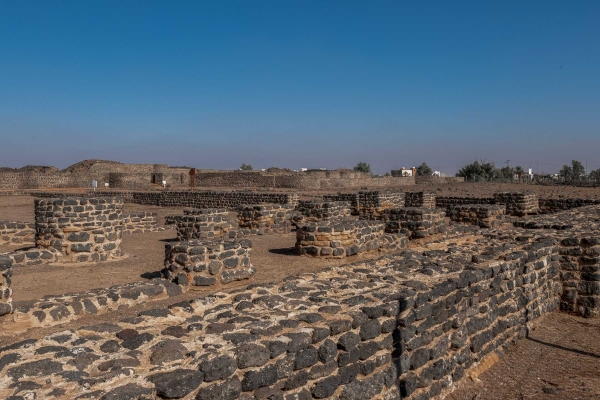

Fayd Archaeological City is one of the historical and archaeological cities located in Hail Province, north of the Kingdom of Saudi Arabia. It is situated east of the city of Hail, approximately 120 km away. Fayd is the third city along the ancient Hajj route, known as the 'Zubaydah Trail,' following Kufa and Basra, and one of the major stations on the Iraqi Hajj route.
Features of Fayd Archaeological City
Fayd is one of the historical archaeological sites in Hail Province. Among its archaeological treasures are the archeological Kharash Palace, the residential city, along with ponds, wells, underground water channels, and the Fayd Archaeological Museum. The remaining artifacts are concentrated in the old town of Fayd, located approximately 1.5 km north of the modern city. The archaeological site covers an area of about 1.5 km in length and width.
Designations of Fayd Archaeological City
Fayd Archaeological City is named the 'Capital of the Route,' as it served as a resting place for pilgrims to replenish their supplies. It functioned as an open market where many pilgrims gathered. This designation is mentioned in the writings of various historians such as Ibn Jubayr, Ibn Battuta, and others. It has also been documented in the works of several western travelers.
History of Fayd Archaeological City
Fayd Archaeological City gained prominence during the Abbasid era, becoming the third most important city after Baghdad and Makkah al-Mukarramah. Its location in the middle of the old Hajj route, known as Zubaydah Trail, between Makkah al-Mukarramah and Baghdad contributed to its prosperity. Pilgrims passed through Fayd and replenished their supplies. The flourishing of the ancient Hajj route had a direct impact on the places it traversed, including Fayd Archaeological City. The city's history dates back to pre-Islamic times, and it rivaled cities like Kufa and Basra in terms of significance and size at that time.
Artifacts discovered in Fayd Archaeological City
In 2018, a team of Saudi archaeologists discovered the site of services for the units of the archaeological fortress in the city of Fayd. They also found ovens used for bread making and basins for washing, connected by channels passing through the last square underground and directly pouring into these basins. The design of the walls often resembled what had been discovered in previous exploratory expeditions within the Fayd Archaeological City.
Additionally, some pottery shards were discovered, along with thresholds found beside the doors. These thresholds are made of stone carved in the center, serving as the base of the door column to facilitate opening the door both outward and inward. Through the ovens, some pottery vessels were found, displaying traces of decoration. Furthermore, various delicate findings were uncovered, including glass, stone, and metal pieces.
In addition to the discovered artifacts in Fayd Archaeological City, a mosque dating back to the early Islamic era was found. There were also architectural units comprising several rooms and architectural details buried between the two walls: the outer wall of the fortress and the inner wall. A portion of the inner wall of the fortress was discovered from the southern side, along with parts of the fortress castle located in the northeastern part. The action plan included revealing, preparing, and cleaning the ancient wells located in what is known as the 'traditional city,' which is connected to underground water channels.
Fayd Archaeological Museum
In 2009, stages of the discovery of the sand-covered city were presented at the Fayd Archaeological Museum. The museum showcased images and archaeological artifacts from the city, providing a visual display of the distinctive pieces discovered during the excavation. This included artifacts related to the camel and Arabian horse breeds used in Islamic conquests. Additionally, there were archaeological findings related to the passage of the Hajj route 'Zubaydah Trail.'
Related quizzes
Related articles
